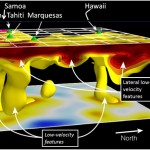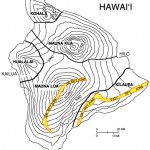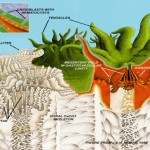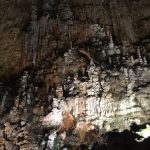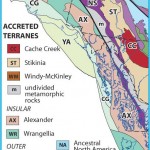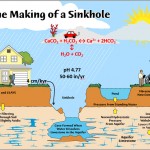Essentially, tholeiites are less evolved. They have different normalized rare earth element REE signatures: when normalized by chondrites, the more primitive tholeiites have flatter REE patterns, while calc-alkalis show enrichment in the light REEs (LREE). Tholeiites are associated with oceanic spreading centers (shallow), while alkali basalts are associated with collisional zones (deeper).
Additionally, per Wikipedia:
Rocks in the tholeiitic magma series are classified as subalkaline (they contain less sodium than some other basalts) and are distinguished from rocks in the calc-alkaline magma series by the redox state of the magma they crystallized from (tholeiitic magmas are reduced; calc-alkaline magmas are oxidized). When the parent magmas of basalts crystallize, they preferentially crystallize the more magnesium-rich and iron-poor forms of the silicate minerals olivine and pyroxene, causing the iron content of tholeiitic magmas to increase as the melt is depleted of iron-poor crystals. However, a calc-alkaline magma is oxidized enough to precipitate significant amounts of the iron oxide magnetite, causing the iron content of the magma to remain more steady as it cools than with a tholeiitic magma.
Scroll down for a chart summarizing petrological differences between tholeiitic and alkali basalts. You can read more about the different magma series here.
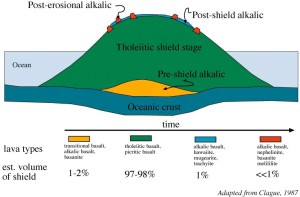 Both of these basalt types two types are found found in Hawaii (alkalics appear briefly at the beginning and end of volcano-building, while tholeiitic makes up the major component). In Hawaii, the magma is thought to become alkaline at the beginning and end stages of volcano building because the volcano is not quite over the hot spot (i.e. the volcano is either approaching or leaving the hot spot); therefore, the magma stays inside the crust longer and becomes of a different composition.
Both of these basalt types two types are found found in Hawaii (alkalics appear briefly at the beginning and end of volcano-building, while tholeiitic makes up the major component). In Hawaii, the magma is thought to become alkaline at the beginning and end stages of volcano building because the volcano is not quite over the hot spot (i.e. the volcano is either approaching or leaving the hot spot); therefore, the magma stays inside the crust longer and becomes of a different composition.
| Tholeiites | Alkali Basalts | |
| Formation | Mid‐ocean ridges, oceanic islands Shallower melting (25% melting at <30 km = tholeiite) Greater % partial melting ( 30% melting at 60 km = tholeiite) | Island arcs, collision/subduction zones Deeper melting (25% melting at 60 km = alkaline basalt) Lesser % partial melting (20% melting at 60 km = alkaline basalt) |
| Groundmass | Fine-grained No olivine Quartz, interstitial glass common Clinopyroxene (augite, pigeonite) Ca-poor orthopyroxene (hypersthene) No alkali feldspar | Coarse Olivine common No quartz; interstitial glass rare Titaniferous augite (reddish) No orthopyroxene Interstitial alkali feldspar or feldspathoid |
| Phenocrysts | Olivine rare, unzoned or orthopyroxene rims Orthopyroxene uncommon Early plagioclase common Clinopyroxene = pale brown augite | Olivine common, zoned Orthopyroxene absent Plagioclase less common, appears later Clinopyroxene = titaniferous augite with reddish rims |
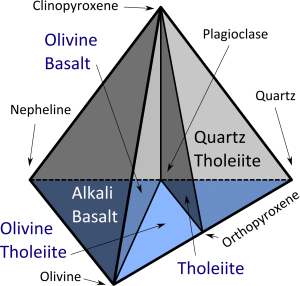
- Tholeiite (oversaturated): contains normative hypersthene and quartz
- Tholeiite (saturated): contains normative hypersthene, but no quartz
- Olivine tholeiite: contains normative hypersthene and olivine
- Olivine basalt: contains normative olivine, but no normative hypersthene or nepheline
- Alkali basalt: contains normative olivine and nepheline
Based on my notes from EOS 201L: Earth Materials, Duke University, Fall 2013, and EOS 402S: Volcanology of Hawaii, Duke University, Spring 2014. Chart after Hughes (1982) and McBirney (1993).

